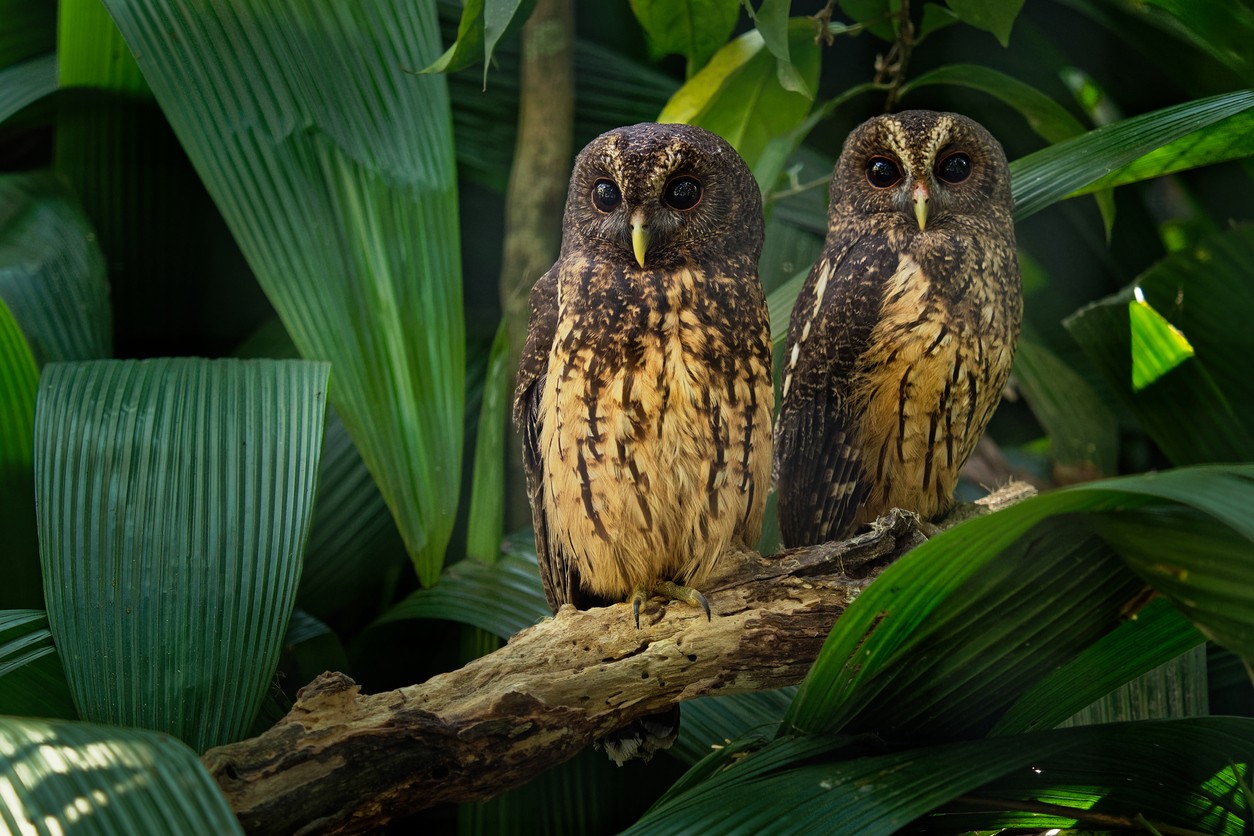Mottled Owl
A species of Neotropical Wood-owls Scientific name : Strix virgata Genus : Neotropical Wood-owls
Mottled Owl, A species of Neotropical Wood-owls
Botanical name: Strix virgata
Genus: Neotropical Wood-owls
Content
Description General Info

Description
The mottled owl is a medium-sized owl with adults reaching 280 to 355 mm (11.0 to 14.0 in) in length. Females are considerably larger than males; the mottled owl shows the greatest degree of sexual dimorphism of any species of owl. The crown, nape and back are mottled in several shades of darkish brown, the facial disc is pale brown and the throat, breast and belly are off-white with distinctive vertical brown streaks. The large eyes are brown, the beak is greyish-yellow or greyish-blue, and the legs and feet are greyish-yellow. There is a darker form of the bird with a buff breast and belly. Mottled owls produce a range of calls which include a hoot used in maintaining territory boundaries, and various whistles, screeches and hisses. 
Size
29-38 cm (11.4-15 in)
Colors
Brown
Black
Yellow
Gray
White
Nest Placement
Cavity
Feeding Habits
Mottled Owl primarily consumes a variety of large insects, such as beetles and grasshoppers, as well as small mammals and bats. It also feeds on reptiles, including snakes and lizards, besides amphibians like tree frogs. Mottled Owl's diet encompasses small birds. It exhibits nocturnal hunting behaviors, skillfully foraging and capitalizing on its sharp senses for predation.
Habitat
The mottled Owl is commonly found in a wide array of forested habitats that include tropical rainforests, tropical dry lowland forests, and pine-oak woodlands. They also inhabit thorn forests, gallery forests, and semi-open areas with second growth. These owls are versatile, occupying landscapes such as coffee and cacao plantations, as well as areas with scattered trees. Mottled Owl can thrive close to human settlements, including towns, villages, and even urban settings. Their altitudinal range extends from sea level up to 2,500 meters.
Dite type
Carnivorous
General Info
Feeding Habits
Bird food type
Behavior
The mottled owl is nocturnal and spends the day in dense vegetation where it may be mobbed by other birds. Its large eyes are adapted for sight at low levels of light, and its hearing is also acute. It is a predator and at night often perches on a branch beside a glade or at the edge of woodland on the lookout for prey. When it detects a small moving object, it swoops down from its perch on silent wings and pounces on its target, which may be a small mammal, a bird, reptile or amphibian or a large beetle, grasshopper or other insect. The mottled owl breeds between February and May in Colombia and in September to November in Argentina. It usually nests in a hole in a tree but may also choose an empty nest built by another species. One or usually two white eggs are laid and incubated by the female and both parents care for the young. 
Distribution Area
The mottled owl is native to Central and South America. Its range extends from Mexico south to Argentina and Brazil and it is found at elevations up to about 2,500 m (8,200 ft). It inhabits a variety of wooded habitats including rainforest, woodland verges, dry thorn forest, pine/oak woodland and plantations and also open countryside with scattered trees. In some parts of its range it is common and it is often found close to human habitations. 
Species Status
Not globally threatened.


Scientific Classification
Phylum
Chordates Class
Birds Order
Owls Family
True owls Genus
Neotropical Wood-owls Species
Mottled Owl